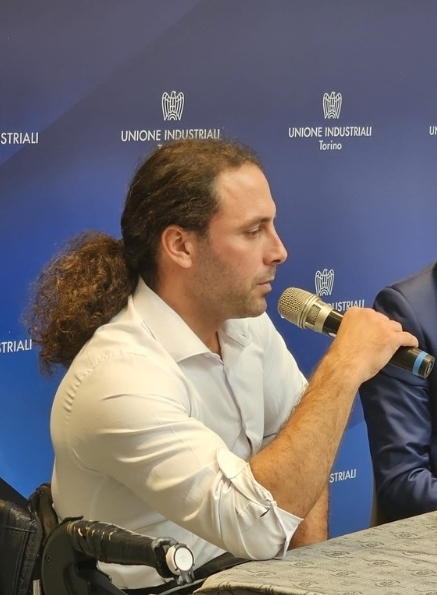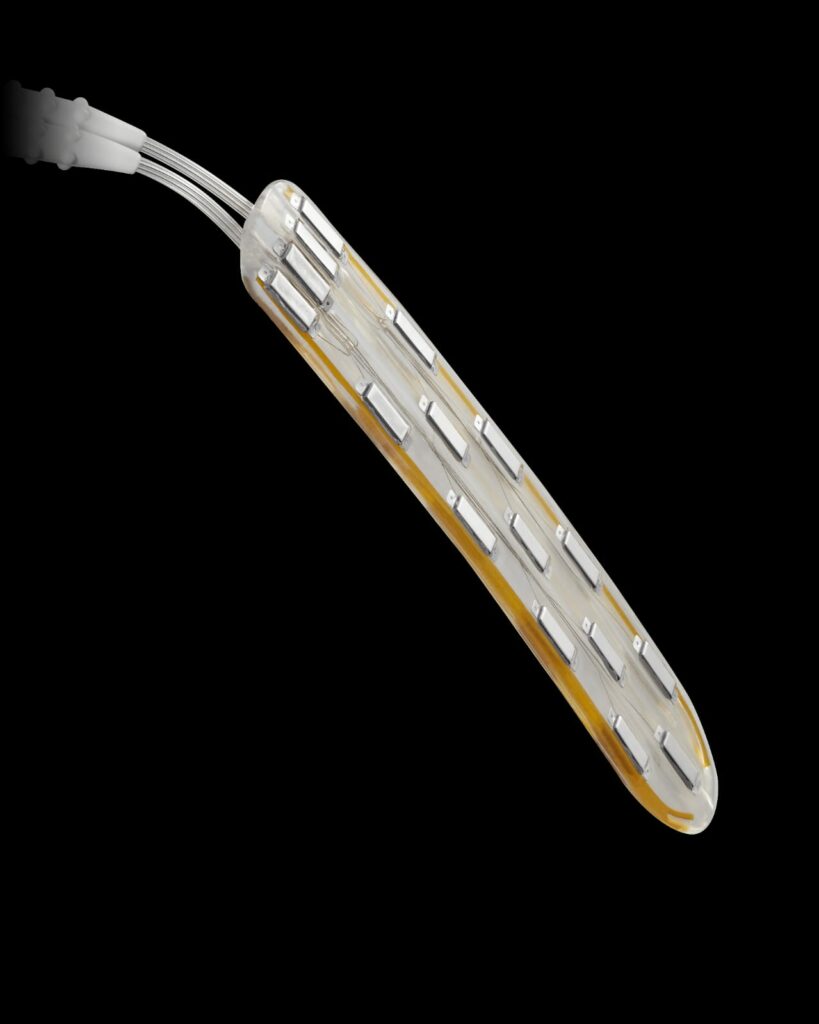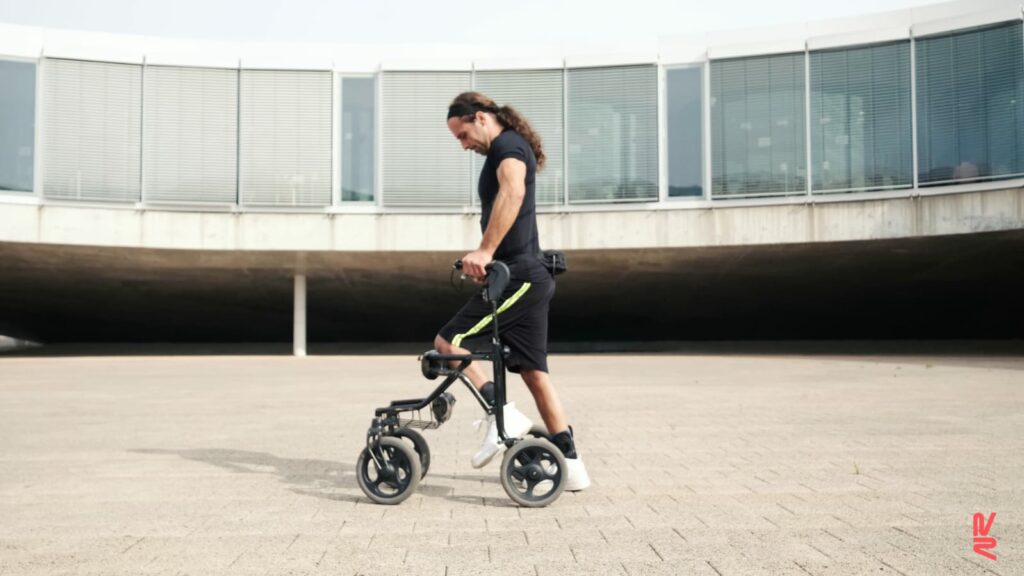Revée pills
Rebirth after a spinal cord injury: the story of Michel Roccati
A complete spinal cord injury is considered one of the most devastating events for human health, with dramatic consequences for motor and sensory systems. However, the story of Michel Roccati, a 30-year-old from Turin, offers a perspective of hope, thanks to advances in regenerative medicine and neurostimulation. Paralyzed from the waist down following a motorbike accident, Michel managed to walk again, becoming a symbol of resilience and scientific innovation.
In 2017, Michel Roccati’s life, born in 1991, was changed forever. «I lost control of the bike and crashed into a bench on a sharp curve», Michel recalls. The impact caused severe injuries to his back, breaking his vertebrae and severing his spinal cord. «When I was taken to hospital, the diagnosis was clear: a complete spinal cord injury. They told me I would never stand up again».

The news was devastating. Michel was just 26, in the middle of his university studies, and living an active life, practising sports like motocross, Muay Thai, and climbing. «At first, it was a shock; it felt so absurd that I decided not to fully believe it. I knew from the beginning that it wasn’t my destiny to stay in a wheelchair forever».
Michel did not give up. «I changed my mindset and started studying everything I could about the spinal cord». With the help of his brother, he began to gather information and train to keep his body in shape. «I kept training to distance myself from the negativity that had built up in the hospital. I used all my time for physiotherapy, studying the brain and spinal cord, and completing my studies».
His determination was unshakable. «In the first six months, there were complications, but mentally, I remained positive».
Discovering the project in Switzerland
Michel attended numerous conferences with experts in the field, where discussions often focused on the brain and spinal cord. At one such event, he learned about a project in Lausanne, Switzerland: «The project involved implanting a series of electrodes between the vertebrae below the spinal injury, creating a sort of bridge to transmit electrical signals past the injury. My brother and I looked at each other and knew it was the right idea for us. It was brilliant – Michel recounts -. I applied for the trial, but at first, they turned me down. My injury was too severe—they weren’t ready for patients like me».
Even faced with rejection, Michel was not discouraged. He continued his preparation, determined not to forget how to walk. «I used a type of exoskeleton on a treadmill that moved me passively. I had mirrors installed around me to observe every muscle group in motion. At the end of each session, I was exhausted, but I managed».
Spinal cord injury trials
Two years later, the long-awaited news arrived: «They told me they were finally ready for me. I didn’t need to be told twice and rushed to Switzerland».
Roccati became one of the first patients to benefit from an advanced trial at the Swiss Federal Institute of Technology in Lausanne (EPFL). The protocol involved implanting electrodes below the spinal cord injury to re-establish muscle connections via electrical impulses. «After the accident, I never stopped believing that something was possible», Michel shares.
Joining the programme was not immediate. Due to the severity of his injury, he was initially denied access, but Michel persevered. He adopted training techniques inspired by those used by astronauts to maintain muscle tone, achieving significant progress.

The surgery took place in August 2020, during the Covid-19 pandemic. «It was a surreal experience. I was surrounded by engineers and physiotherapists in a futuristic lab, with cameras everywhere to monitor my every movement. But the most incredible moment came after days of stimulation and training: I stood up for the first time. All the engineers clapped. I felt reborn».
From that point on, his life changed radically. «Every day, I improved; every day, we discovered new muscles to activate».
Through a combination of electrical stimulation and intensive physiotherapy sessions, Michel gradually regained control of certain muscle groups. «My body is responding very well to the stimulation. Along with recovering muscle and bone tone, my spinal cord is also regenerating. I had a complete injury before, but now it’s incomplete. I’ve managed to activate some muscle groups independently, something that was impossible before, and even my sensation has improved».
Current achievements and the future
Michel has now achieved milestones that seemed unimaginable not long ago. «I started canoeing, and in less than a year, I became the Italian champion. It was incredible to see how all my effort and perseverance had brought me so far».

When asked what he would say to someone facing a similar challenge, Michel replies: «Consistency in training and believing firmly in what I wanted helped me. The support of my family and friends was fundamental, they always backed me 100 percent. It was the sum of many things that led to this final result».
To those embarking on a similar journey, Michel adds: «The future is here. Just a few years ago, it seemed impossible, but today it is possible to stand up and walk again. We are at a stage where there are many possibilities. It’s important to take control of your life and get back in the game, keeping your spirits high and staying positive. Patience is crucial because everything is still experimental, but progress is being made. Every day, new discoveries are made. Research is advancing, with the support of initiatives like Wings for Life World Run, a charity marathon where all proceeds go to research, and companies that strongly believe in this field. It’s vital to maintain the best possible condition, both mentally and physically». Michel concludes.


































